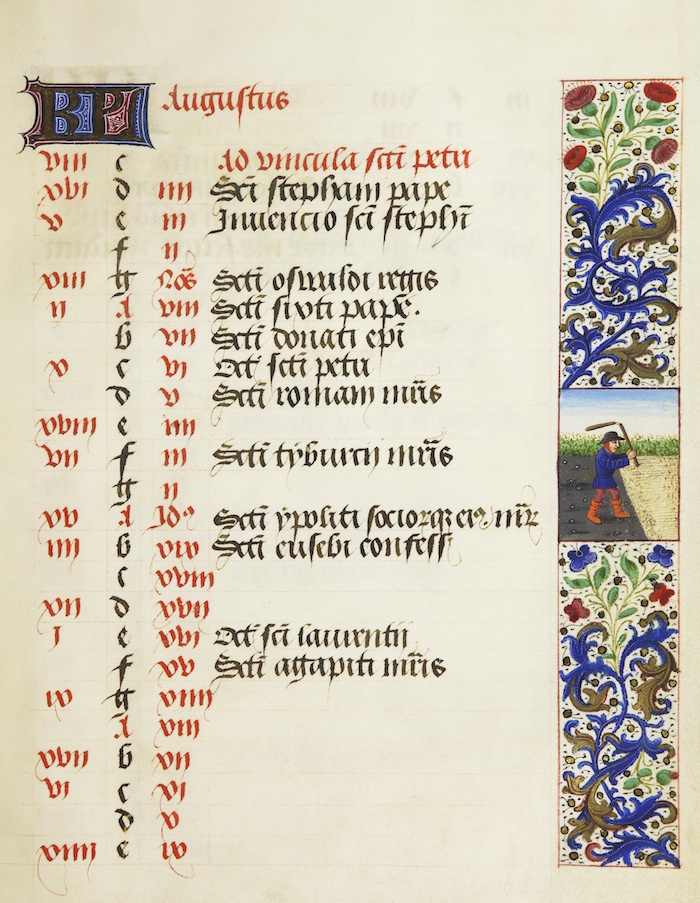Shifted fully to the Master of the Black Prayerbook, or a follower, gives us Walters Art Museum W.190. It’s another late 15th C Flemish Book of Hours, this one somewhat difficult to localize between Bruges and Liege. It’s been rebound out of order at some point in its life, but having the digitized copy allows us to return it to a more sensible, if not demonstrably original, order.
The calendar is complete “in intent if not in execution”. A scribal error caused April to only have 29 entries, and it appears the feast for April 19 has been omitted. The saints have a very strong Bruges character, often following the unusual saints of that city. There are a few on the wrong dates, and a pair of strange errors. May 23 has “Transfigura[o] d[omi]ni”, where that day is actually the feast of the Translation, which is an unusual feast peculier to Bruges. A stranger error is September 13(see f.9r below), usually the feast of St. Philip, is here listed as “Philippi & Jacobi”. That feast is May 1, and so points to a scribal error rather than a copying error.
(DB Id: 211)
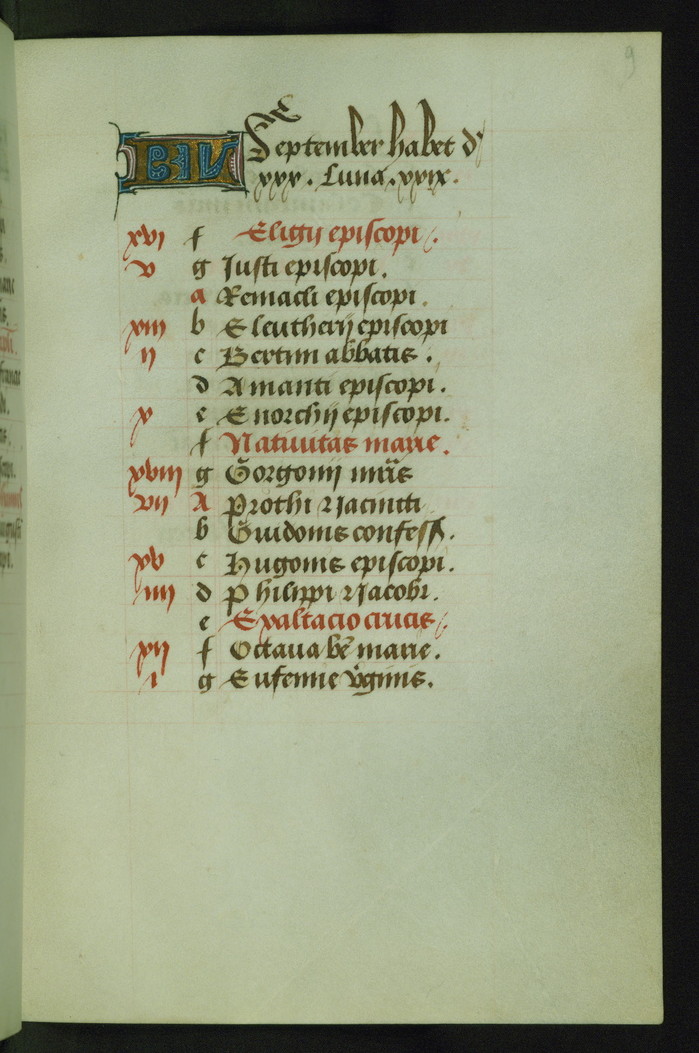
Yet another William Vrelant manuscript held at the Walters Art Museum, W.184 is a late 15th C book from Bruges. The calendar is not very decorated, but there's a bit of gold leaf on the KL at least. In the calendar there are only 120 days populated, and of those the regular 1/3 are ranked high. The saints listed are a smattering of the usual Belgian ones, though there are a few unusual ones. One that stands out is St. Cornelius (March 31, see f.5v below), which only appears in one other book, the Huth Hours (BL MS Add 38126)
(DB Id: 204)
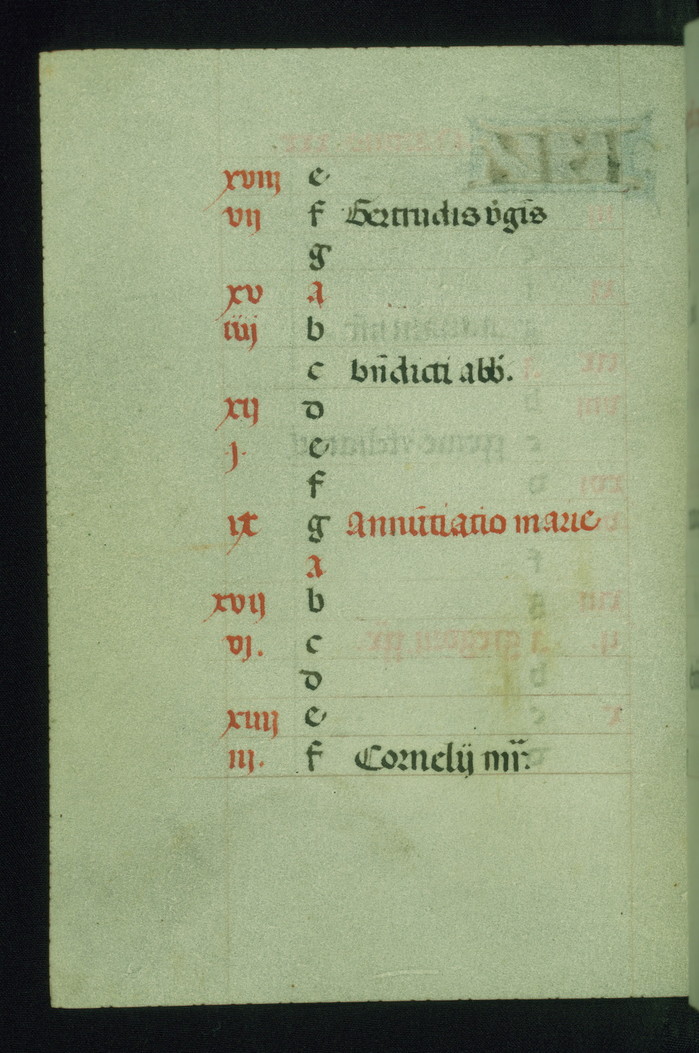
Continuing to add from the Walters Art Museum, W.183 is a late 15th C book from Bruges. The manuscript was illuminated in the circle of William Vrelant, as were Walters W.168, W.177, W.179, and W.180. The calendar is very sparse, both in terms of decoration and population. There is no border, Zodiac or labor of the month, only the bare minimum of KL at the start of the month. After the Calendar, there are lovely borders, with berries and birds, at the start of sections of the text and a profusion of full-page miniatures.
The calendar itself is rather common, about 50% full (155 saints) and of those about 1/3 high-importance feasts. There are a fair number of errors, even some of the important feasts, such as the Sunday of the Resurrection(should be March 27) or the Pope Leo the Great(should be April 11), have shifted by a day or two. I'd expect this is either scribal error in this MS, due to the low population of saints it's harder to keep registration, or an error in the source. Hopefully a larger DB of similar manuscripts will narrow the root cause.
(DB Id: 203)
At first blush Harvard's Houghton Library ms Lat 132 is a somewhat unremarkable Use of Rome Hours from Bruges. Though it has 12 lovely miniatures in the style of the "Gold Scrolls group", the calendar is rather boring, red and black with red strikethroughs for medium-importance days like vigils. It was updated at least 2 seperate times, with a second hand writing in black Gothic similar to the original and a third hand in a later batarde . Hidden in it, however, is an interesting clue to the literacy of its owners, October 9th(see f.Fv below). Written in red, this is the Feast of St. Denis, patron of the eponymous cathedral just north of Paris and the martyr for whom Montmartre is named. Denis is a adaptation of his actual Greek/Latin name, Dionysus. The first scribe wrote Dyonisi Epi (Dionysus Bishop), as expected for a calendar in Latin, but the second scribe appended "S. Denis", either not understanding that they are the same, or for a patron who might not know the Latin.
(Link to the DB: 135)
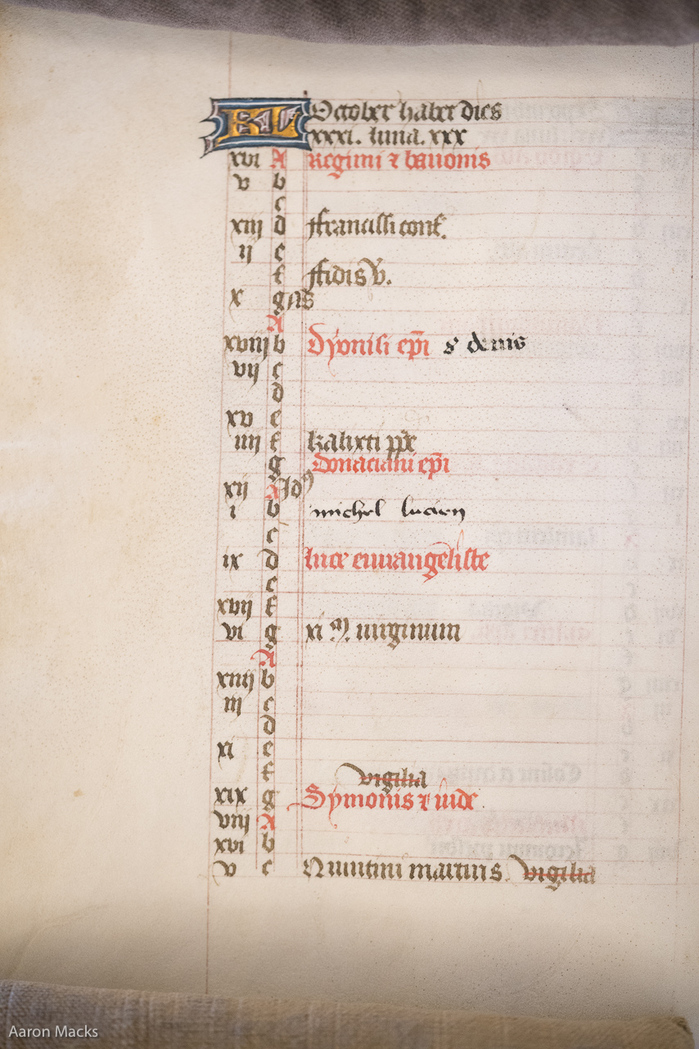
There’s no proper shelfmark but with only a few MS, Memorial University of Newfoundland can be forgiven. This Premonstratensian Book is dated to circa 1500 and unusually the name of the unusually female illuminator is known, Cornelia van Wulfschkercke (d. 1540), a nun of the calced Carmelite convent of Sion in Bruges. The calendar is not very well populated, with only 131 days populated. There is a rather interesting scribal error between April and May. April is only given 29 days, ending with the dominical letter ‘g’. May starts with ‘a’ and has both 32 days and all the saint matching their dominical letter. It appears that either the scribe realized their error and intentionally added April 30 as the first line of May, or simply blindly copied on, allowing the 2 errors to cancel each other out.
The first of three Books of Hours added during a visit to the BPL manuscript collection last week, MS q. med 137 is a beautiful small Book illumiated in the Workshop of Willian Vrelant, with text in a semi-batarde script. It's a somewhat unusual book liturgically, Use of Rome, but with calendar for Utrecht and text entirely in Latin. Most of the Utrecht books are the Dutch transtlation of Geert Groote. The Calendar itself has no very unusual details, there are only 160 entries and nearly all seem to match Bruges exemplars. The image below(f.28r) is after the calendar, the start of the Mass of the Blessed Virgin Mary, showing the gray and blue foliage that is common throughout the book
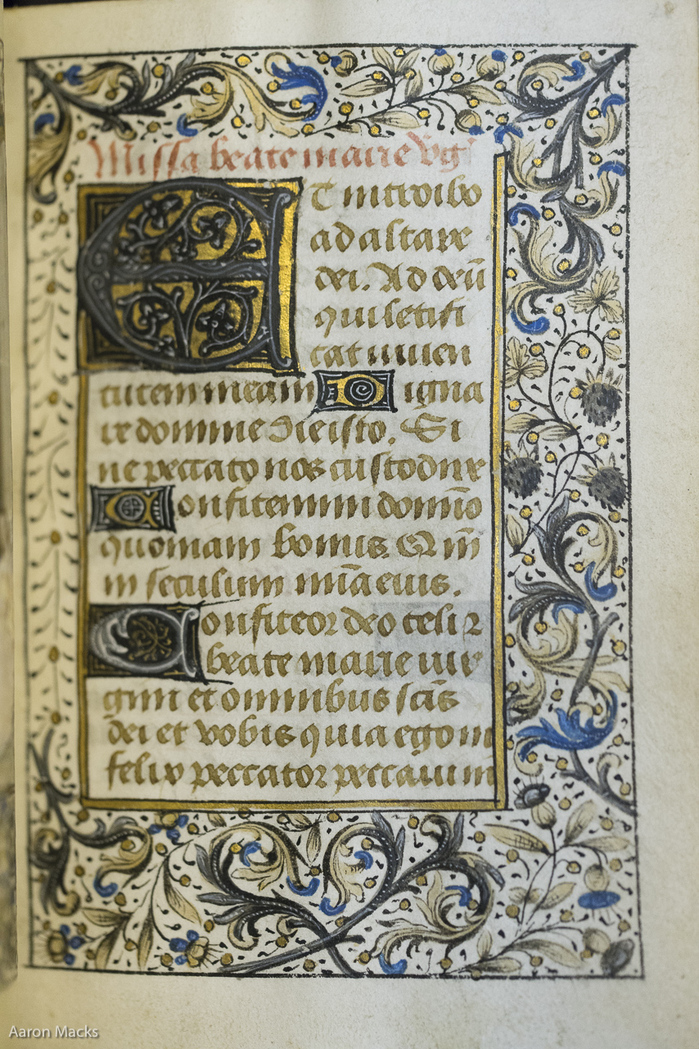
Another manuscript from the Richardson collection at Harvard's Houghton Library, Richardson 9 is a northern book, Use of Rome, from circa 1500, written in a very practiced Batarde hand. There are remarkably few errors in the completely-populated calendar and although it is not listed as such in the catalogues, the signs point to Bruges as the source of the calendar. The start of October (f.12v below) shows an interesting listing on the 3rd, Sts. Ewald and Ewald, 2 priests who died on the same day, are listed as "Duorum Enwaldorum", "The Two Enwalds"
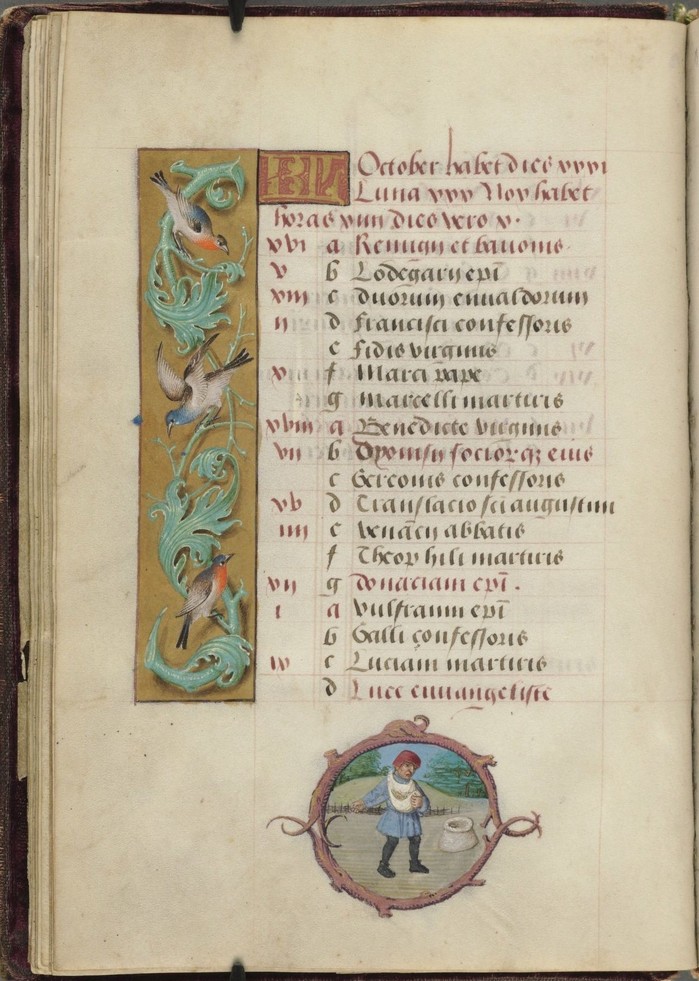
Another one from the State Library of Victoria, in Melbourne Austrailia, RARES 09.R66HB is a slightly strange book. The use of York is rare by itself, but in addition this one was written in Bruges. The calendar is rather sparse 161 entries in total, and is missing some common feasts, such as the Christmas Vigil (Dec. 24). An additional oddity is that the Octave of St. Laurence is listed (Aug 17), but not the actual feast, which would have been August 10th, see f.8r below
